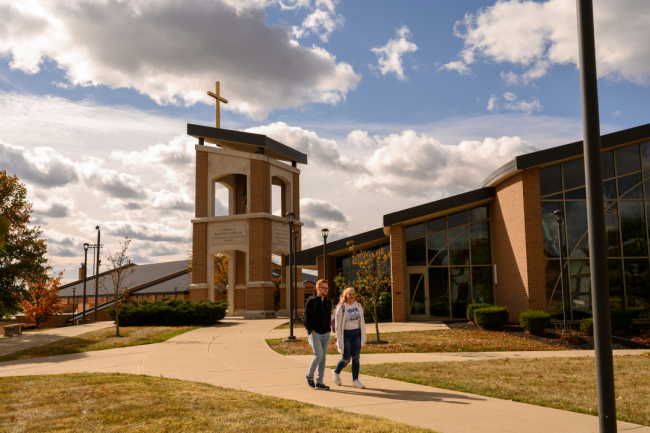You have /5 articles left.
Sign up for a free account or log in.

Undergraduate students at Thomas More University will complete a nine-credit concentration as part of the new core curriculum requirements.
Thomas More University
Thomas More University in Kentucky revamped its core curriculum requirements to give students greater flexibility in their degree progression and interdisciplinary exploration while maintaining a liberal arts education.
Prior core curriculum models constricted students’ opportunities to explore other disciplines, take electives or pick up a second major or minor, says Kim Haverkos, dean of the College of Liberal Arts and Social Sciences. The Second Century Core, in comparison, is designed for learners to engage with topics outside their major and general education requirements with the help of their advisers.
Molding the core: The Second Century Core development began in fall 2021, with the goals of revising general education requirements, integrating high-impact practices into curricular and co-curricular experience of all students, increasing personalized quality programs for a changing workforce, and infusing the Thomas More mission and values throughout.
The development team consisted of 17 faculty and staff members, several of whom participated in the General Education Workshop by the American Association of Colleges and Universities.
The new core was approved in March, with a soft rollout beginning later this year.
How it works: Administrators describe the new core as a three-bucket model: students will take classes from the required curriculum, their major curriculum and then a third elective track.
In their first year, students complete “inner core” courses and are encouraged by advisers to explore other disciplines. Students will select a nine-credit concentration as part of the “outer core,” which they can begin their sophomore year, Haverkos explains.
“Student choice with adviser guidance is key to the success of this Second Century Core,” Haverkos says.
Learners still earn 120 credits to graduate, and the core classes make up 47 of those credits—38 for the inner core and 9 for the outer core. The 2022–23 core curriculum required around 59 credits, or about half of a student’s degree.
The new core reduces credit requirements in social sciences, history, natural sciences, philosophy, fine art and language. It also removes a three-credit senior theology requirement.
The second-century model builds a breadth of content in the inner core and depth of content in the outer, Haverkos explains.
Gearing up: Incoming students this fall will start on the Second Century Core curriculum model, with an institutionwide rollout in fall 2024.
The phased approach allows faculty and staff members to be familiar and comfortable with the new curriculum, Haverkos says.
In the meantime, faculty and staff will attend training sessions to understand the new alignment processes, assessment standards and curriculum design. Training began for select academic departments affected by the soft rollout this spring, and the remaining departments will undergo training this summer and over the 2023–24 academic year.
What’s under evaluation: The core curriculum will undergo regular program review to determine the impact on students. Administrators are also considering portfolio-style assessments to collect student work to evaluate the new core.
The goal is to improve critical thinking, analysis of creative works and numerical data “in the research for truth and meaning for life,” Haverkos says, as well as communicating effectively and evaluating diverse perspectives. “University scholars will be in a constant effort to collaborate and supplement student learning to better prepare them to make sense of the world and excel in their future careers and lives.”
If your student success program has a unique feature or twist, we’d like to know about it. Click here to submit.




